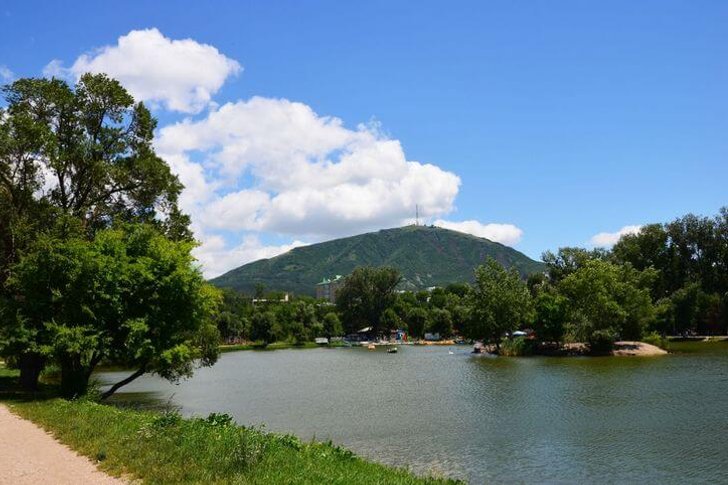It was from Pyatigorsk that the flowering of the Caucasian Mineral Waters began as a resort area - in the 1860s, after the discovery of dozens of thermal springs, the first balneological society appeared here. The city is even called a mineral museum because of the wide variety of medicinal waters and the undeniable value of this area for health.
Pyatigorsk will appeal to lovers of nature, picturesque landscape parks and southern provincial architecture. While walking through the old quarters, one gets the impression that nothing has changed here since the 19th century: the noble public still walks along the boulevards, secular evenings are held in the salons, and Mikhail Yuryevich looks thoughtfully at the Elizabethan Gallery, thinking through the plot for his next masterpiece.
What to see and where to go in Pyatigorsk?
The most interesting and beautiful places for walking. Photos and a short description.
- Eagle sculpture
- Lake Proval
- Arbor Aeolian harp
- Chinese gazebo
- Monument to Lermontov
- Place of Lermontov's duel
- Spassky Cathedral
- Lermontov Gallery
- Academic gallery
- Stavropol Operetta Theater
- Pyatigorsk Museum of Local Lore
- M. Yu. Lermontov Museum-Reserve
- House-Museum of A. A. Alyabyev
- Grotto of Diana
- Grotto of Lermontov
- Fountain Fairy Tale
- Park Flower Garden
- Cable car
- Pyatigorsk necropolis
- Mount Mashuk
Eagle sculpture
So there was a tradition that each city of the CMS has its own eagle - a symbol of the region. Pyatigorsk was no exception, where the sculpture of a bird is located on the top of the Hot Mountain. This is the same "King of the Caucasus Mountains", in whose paws a dying snake wriggles. The first Eagle appeared in 1901, but in the 20th century it was destroyed twice - either by seeing the symbol of royal power in the form of a bird, or by seeing the emblem of the Third Reich. The last statue was erected on the mountain in 1975.
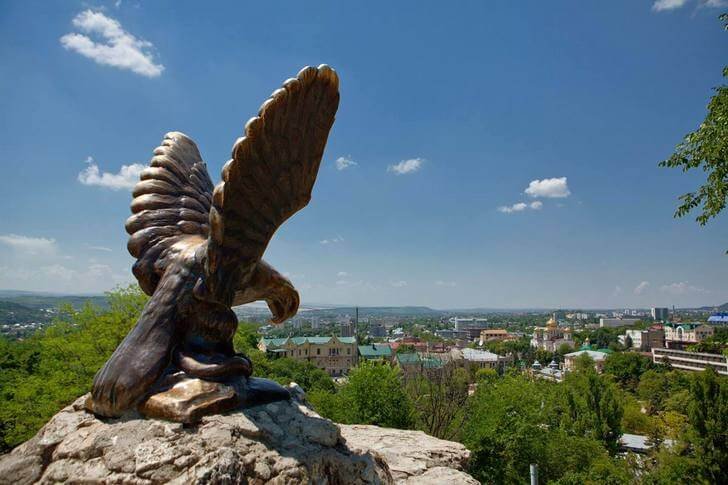
Lake Proval
A funnel-shaped cave on the slope of Mashuk, at the bottom of which there is an underground lake of karst origin, filled with mineral water. Its waters have a pure blue color, which is largely due to the special chemical composition. In the 19th century, the cave was consecrated and an icon was hung on one of its walls. The entrance to the tunnel leading to Proval is guarded by sculptures of lions, there is also a monument to Ostap Bender.

Arbor "Aeolian harp"
A gazebo with a romantic name is located on Mount Mashuk. It is made in the form of a classical rotunda with a domed roof. The place for its installation was not chosen by chance - it offers a panoramic view of the surroundings. The structure is located on the edge of a cliff, a paved path leads to it. "Aeolian harp" became famous for the fact that M. Yu. Lermontov repeatedly visited here. The writer mentioned the building in his work "Princess Mary".
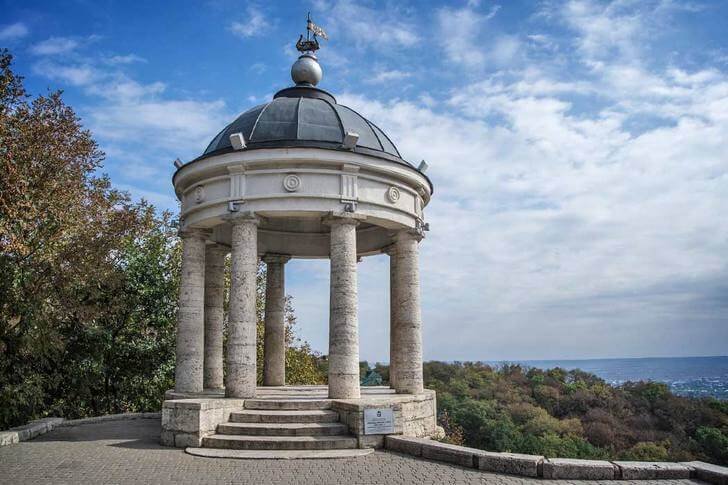
"Chinese gazebo"
The gazebo is located on the territory of the Hot Mountain Park. It is made in a bizarre oriental style, which is why it is called “Chinese”: the outlines of the curved roof resemble a Buddhist pagoda, the forged decorations placed along the edges look like traditional Chinese lanterns. The building was built in 1976 on the site of the Colored Pavilion, which was destroyed after the Revolution.
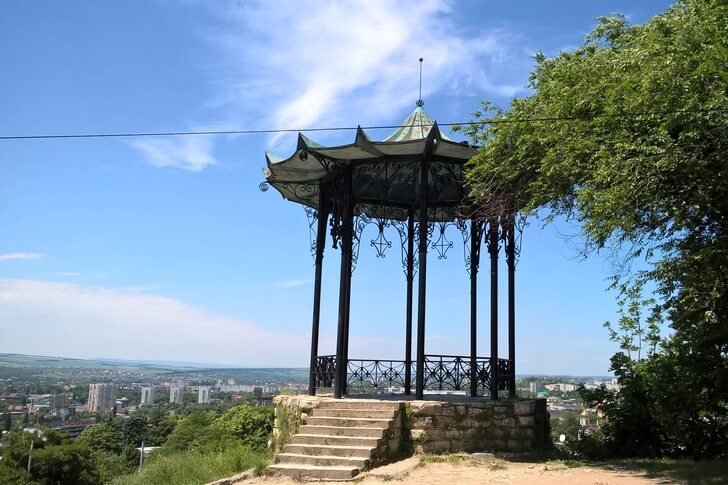
Monument to Lermontov
The fate of M. Yu. Lermontov was inextricably linked with Pyatigorsk - he repeatedly visited here, lived during exile and died from the bullet of N. S. Martynov. The main city sights are "Lermontov's places". Among them stands out the monument to the writer, erected in 1889. The monument is a sculpture of Mikhail Yurievich, sitting in thought on a pedestal in the shape of a rock.
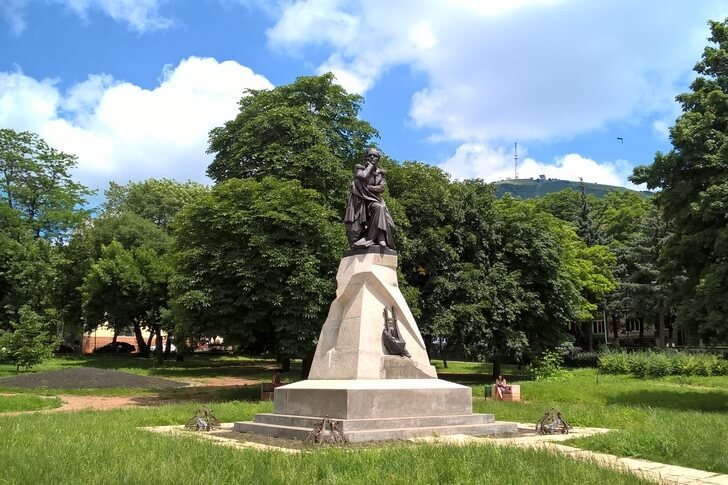
Place of Lermontov's duel
Glade on one of the slopes of Mashuk, where M. Yu. Lermontov died in a duel in 1841. The obelisk and the fence denoting the landmark were installed at the beginning of the 20th century. The pyramidal pylon is made of the local mineral dolomite and has a bronze bust of the writer in its center. Vulture sculptures are placed along the edges of the stone fence. The obelisk is part of the M. Yu. Lermontov Museum-Reserve.

Spassky Cathedral
The first temple on the site of the modern Spassky Cathedral was erected in the 19th century. The initiator of its construction was Nicholas I. In the 1930s, the building was demolished, and a cafe was built on the wasteland, and a little later, a city square was organized. In the 1990s, the authorities of Pyatigorsk decided to restore the temple. After a long 20-year construction, the new cathedral was solemnly consecrated by Patriarch Kirill.

Lermontov Gallery
An unusual design made of colored glass and steel, brought to Pyatigorsk from the Nizhny Novgorod exhibition at the end of the 19th century. The building is a pavilion, in the appearance of which the Gothic style and the Art Nouveau style are mixed. It looks very light and airy, reminiscent of a fairy-tale palace from afar. Today, inside the gallery is a concert and exhibition complex.
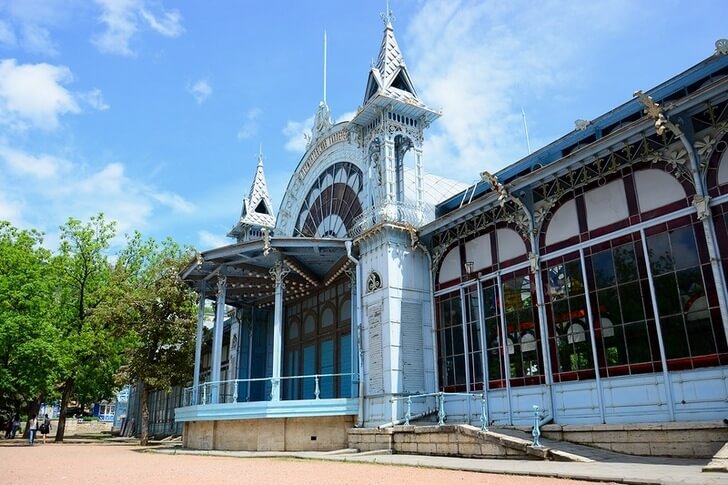
academic gallery
The gallery was built over a drinking narzan spring by order of Prince M. S. Vorontsov. The famous architect of that time, S. I. Upton, worked on the project, who created a building resembling an Italian Renaissance palazzo. The gallery was named in honor of the Empress Elizabeth, in Soviet times it was renamed the Academic Gallery. In the 1930s, a staircase and an observation deck were added to the complex.

Stavropol Operetta Theater
The opera stage was founded in 1939, it was located in the building of the beginning of the 20th century, designed by A. I. Kuznetsov. This building was known as the People's House, it was here that the establishment of Soviet power in the city was announced. During the Second World War, the building was set on fire by German soldiers, but later it was restored. Until 1997, the stage was called the Pyatigorsk Theater of Musical Comedy.

Pyatigorsk Museum of Local Lore
The museum was founded in 1903; it is the oldest exhibition complex in the CMS. The collection is located in the building of the former Mikhailov Hotel, the first Pyatigorsk sanatorium. Over the long history of its existence, the museum has accumulated more than 130 thousand exhibits: rare books, documents, photographs, objects of arts and crafts, ethnographic and archaeological artifacts.
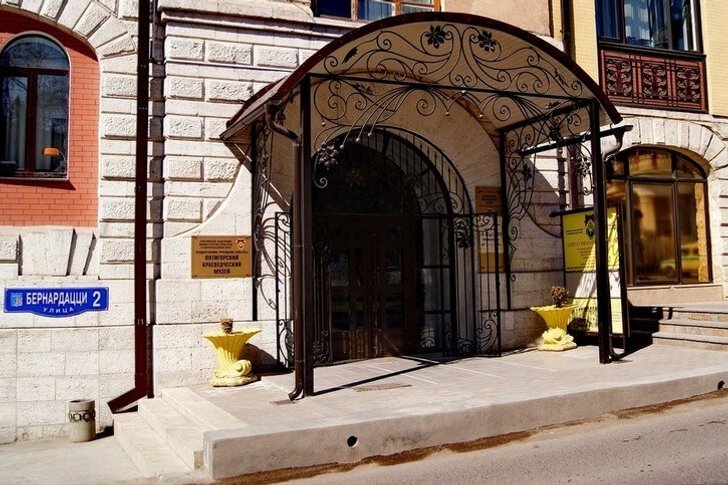
M. Yu. Lermontov Museum-Reserve
The most important of Lermontov's places is the building of the first half of the 19th century, located in the old city quarter. In this house, the writer spent the last years of his life and created some of the most outstanding works. The museum was founded in 1912. Today, in addition to the estate, it includes several more branches. Among them is the "Lermontov's house", where personal belongings of Mikhail Yuryevich are exhibited and the original furnishings are preserved.

House-Museum of A. A. Alyabyev
The object is part of the M. Yu. Lermontov Museum-Reserve. It is located in one of the historical quarters of Pyatigorsk. The building is an example of urban construction of the first half of the 19th century - a wooden second floor on a stone plinth. Before nationalization in 1920, it changed several owners. The department of the museum was placed on the territory in the 1980s. The exposition is dedicated to the composer A. A. Alyabyev.
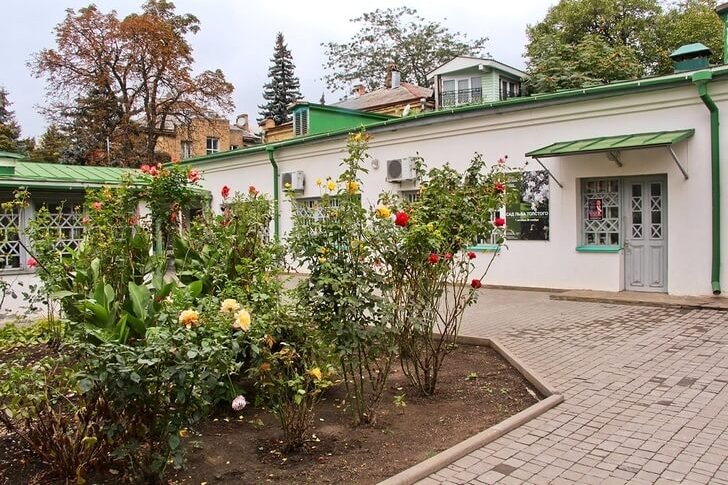
Grotto of Diana
An artificial cave on the slope of the Hot Mountain, created in the 1930s. The grotto was built as a monument in honor of the first ascent of Elbrus, which took place in 1829. The building was designed by the Bernadazzi brothers. Given the history of the attraction, it is strange that it was named after the goddess Diana, but this was the will of the expedition leader, General G. A. Emmanuel.

Grotto of Lermontov
Unlike the grotto of Diana, the Lermontov grotto is a natural cave, slightly ennobled for the convenience of visiting. It was discovered during the creation of the Emmanuel Park. Initially, the place was named after the beautiful nymph Calypso. M. Yu. Lermontov often liked to visit here - he could stand near the cave for a long time, admiring the views and watching people walking by the Elizabethan Gallery.
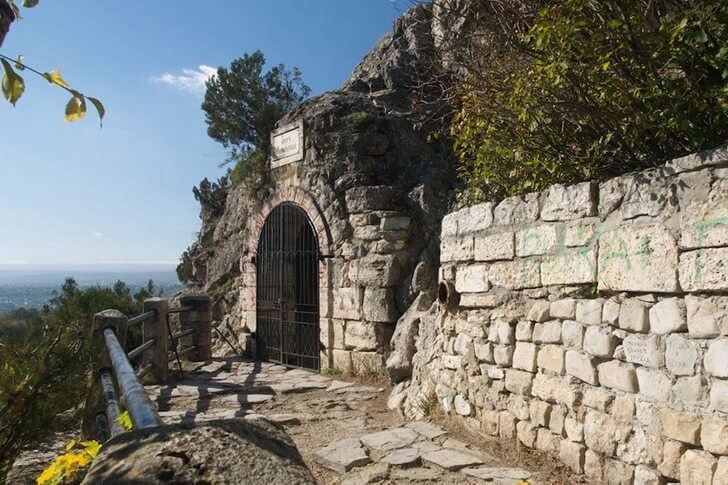
Fountain "Fairy Tale"
The sculptural composition of the fountain adorns Cathedral Square. It is a fabulous mountain with grottoes, from where the owners of the underground bowels, the gnomes, appear. Water jets beat around, enveloping the stone sculptures with a mystical haze and giving the picture a completely unrealistic look. The name of the fountain is chosen very well, it seems as if it is a portal to another dimension: to the world of magic, sorcery, countless treasures and amazing creatures.
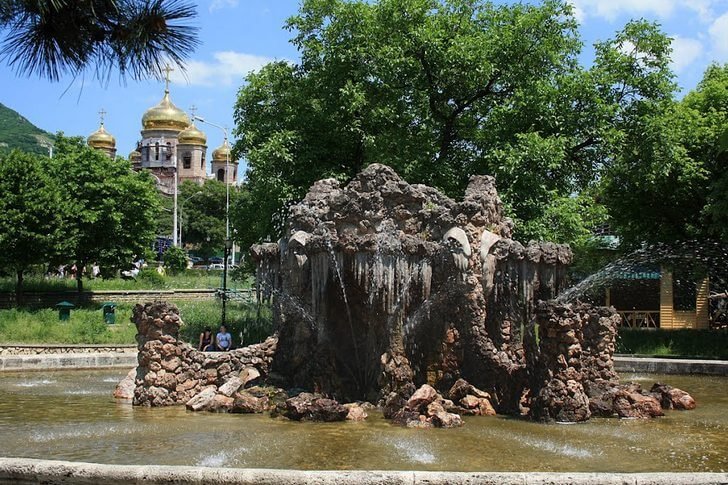
Park "Flower Garden"
The park stretches on the slopes of the Mashuk and Hotaya mountains; the Bernadazzi brothers worked on its improvement in the 19th century. On its territory there are the most famous architectural sights of Pyatigorsk and mineral springs. Here you can walk along the paved paths among picturesque flower beds, admire the surroundings from observation platforms, relax on benches and gazebos, visit grottoes and pavilions.
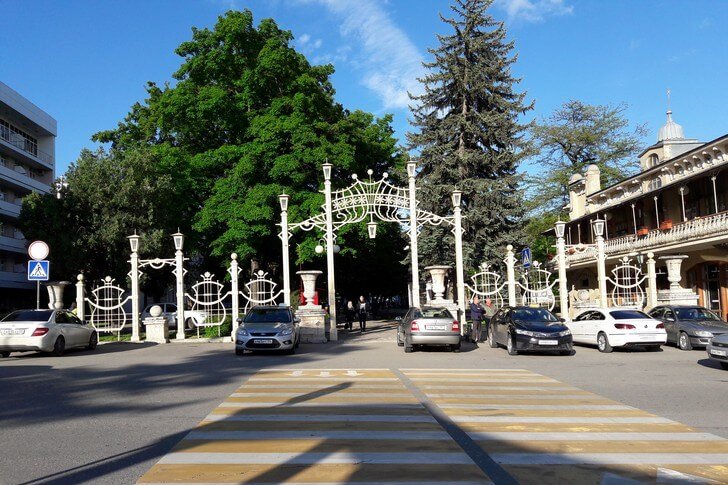
cable car
The cable car leads to the top of Mashuk. This is probably one of the most classic routes of the city, which tourists choose to get acquainted with the surroundings. The length of the path is about 1 km. The road was built in the 1970s, since then the wagons have been regularly carrying passengers. While driving, a panorama of the city and a magnificent view of the mountain range surrounding Pyatigorsk unfold before your eyes.

Pyatigorsk necropolis
The oldest cemetery in the North Caucasus, where military men, doctors, artists and statesmen were buried. It was founded in 1824. The necropolis is interesting for its tombstones and monuments, many of which can be considered as valuable architectural objects. After the death of M. Yu. Lermontov, he was buried here, but then the body was transported to the writer's family estate in the Penza province.
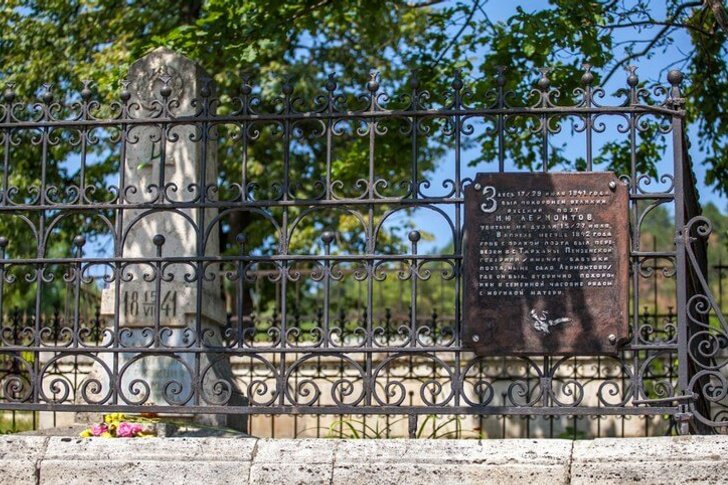
Mount Mashuk
Natural monument in the city of Pyatigorsk. Mineral springs flow in the bowels of the mountain, tourist sites are located on its slopes, and from the top you can see the ridges of the Caucasus Mountains and Elbrus. It is believed that all routes will certainly lead to Mashuk - the mountain is simply impossible to bypass when visiting local attractions. You can climb up on foot along one of the many trails or by cable car.
